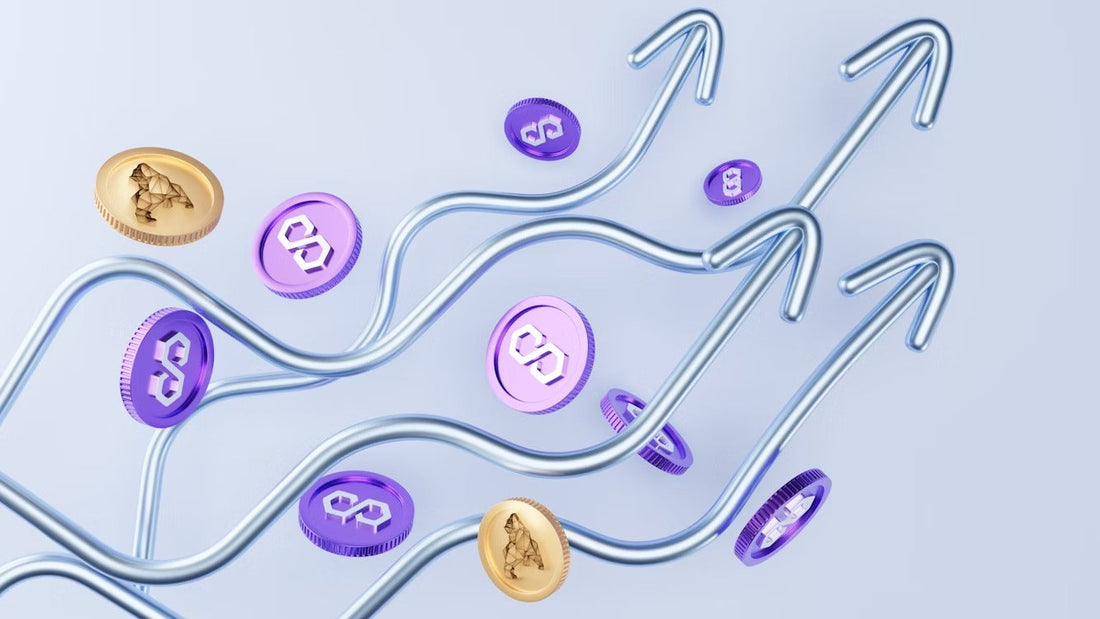Table of Contents:
- What Is Menopause?
- The 5 Stages of Menopause
- Symptoms of Menopause
- Potential Health Risks During and After Menopause
- Menopause Diet for Indian Women
- Why This Diet Works
- Exercise for Menopause: What Works Best?
- Fighting Menopause Naturally: Lifestyle Shifts That Matter
- Myths vs. Truths: Menopause Edition
- FAQs: Menopause, Diet & Exercise
What Is Menopause?
Menopause marks the natural end of a woman’s reproductive years, defined as 12 consecutive months without a menstrual period. It typically occurs between ages 45–55, though symptoms may start earlier.
This transition brings profound hormonal shifts, mainly a decline in estrogen and progesterone, which can affect physical, emotional, and metabolic health.
The 5 Stages of Menopause
Understanding the phases of menopause helps women navigate the journey with more confidence.
|
Stage |
What Happens |
Hormonal Shift |
|
1. Premenopause |
Regular cycles |
Normal estrogen/progesterone |
|
2. Early Perimenopause |
Irregular cycles begin |
Estrogen spikes and dips |
|
3. Late Perimenopause |
Fewer periods, symptoms worsen |
Estrogen declines sharply |
|
4. Menopause |
No period for 12 months |
Very low estrogen |
|
5. Postmenopause |
Years after menopause |
Health risks may rise (bone, heart, metabolism) |
Source: Mayo Clinic Menopause Guide
Symptoms of Menopause
-
Hot flashes & night sweats
-
Mood swings or depression
-
Sleep disturbances
-
Vaginal dryness
-
Slower metabolism & weight gain
-
Joint stiffness & fatigue
- Memory lapses ("brain fog")


Potential Health Risks During and After Menopause
-
Osteoporosis (bone loss from low estrogen)
-
Heart Disease (menopause-related drop in HDL)
-
Type 2 Diabetes (due to insulin resistance)
-
Sarcopenia (loss of lean muscle mass)
-
Menopause belly (visceral fat around the abdomen)
A study in The Journal of Clinical Endocrinology & Metabolism found that postmenopausal women have 5x higher risk of abdominal fat storage due to declining estrogen.
Menopause Diet for Indian Women
When it comes to menopause nutrition, there’s no one-size-fits-all, especially across cultures. For Indian women, adapting the menopause diet to suit familiar flavors, home ingredients, and lifestyle is not only practical but also sustainable.
Indian Superfoods That Support Menopause
|
Food |
Benefit |
|
Ragi (finger millet) |
High in calcium — supports bone health and reduces the risk of osteoporosis |
|
Flaxseeds (alsi) |
Rich in omega-3s and lignans — balances estrogen and reduces hot flashes |
|
Moong dal (green gram) |
Easy to digest protein source — preserves lean muscle during hormonal decline |
|
Curd & buttermilk |
Gut-friendly probiotics — aid estrogen metabolism and digestion |
|
Turmeric (haldi) |
Natural anti-inflammatory — supports joint health and immunity |
|
Curry leaves & moringa |
Iron and antioxidant-rich — fight fatigue and oxidative stress |
|
Ghee |
Supports hormonal balance — in moderation, promotes fat-soluble vitamin absorption |
|
Ashwagandha |
Adaptogen — reduces cortisol and balances mood, especially useful during perimenopause |
Indian Menopause Diet Plan: 7-Day Sample
This plan focuses on blood sugar balance, digestive comfort, and hormone-supportive nutrients — and is vegetarian-friendly (with non-veg add-ons optional).
Day 1
-
Morning: Warm water with cinnamon + soaked flaxseeds
-
Breakfast: Vegetable poha with peanuts + curd
-
Lunch: Roti + palak moong dal + cucumber raita
-
Snack: Roasted makhana + green tea
-
Dinner: Quinoa khichdi + curd
Day 2
-
Breakfast: Ragi dosa + tomato chutney
-
Lunch: Brown rice + rajma + sautéed bhindi
-
Snack: Buttermilk + handful of almonds
-
Dinner: Millet upma + mint chutney
Day 3
-
Breakfast: Besan chilla with ajwain + mint chutney
-
Lunch: Roti + methi tofu sabzi + curd
-
Snack: Flaxseed laddoo
-
Dinner: Moong dal soup + veggie stir fry
Day 4–7
-
Rotate similar meals with additions like:
-
Bajra roti
-
Moringa leaf sabzi
-
Amaranth (rajgira) porridge
-
Homemade paneer bhurji with turmeric
-
Steamed fish (optional) with mustard marinade
-
Bajra roti
Tip: Include a cup of chamomile or tulsi tea post dinner to ease sleep and digestion.
Menopause Foods to Avoid in Indian Context
-
White rice, maida & refined sugar
Spike blood sugar → worsens hot flashes, belly fat, and insulin resistance
-
Spicy pickles & fermented deep-fried snacks
Can trigger acid reflux and sleep issues
-
Excess caffeine (3+ cups of chai/coffee)
Affects sleep, increases anxiety, and worsens palpitations
-
Too much alcohol (esp. wine/whiskey)
Increases vasodilation → more night sweats and skin flushing
Indian Home-Remedy Style Additions
-
1 tsp flaxseed powder in curd or atta dough
-
Haldi milk at night (with pepper + ghee) for joint and sleep support
-
Ashwagandha or shatavari powder in warm milk during perimenopause (expert-guided)
Why This Diet Works
This modified Indian menopause diet:
-
Stabilizes blood sugar (reducing hot flashes + fatigue)
-
Boosts calcium + protein intake (to fight bone + muscle loss)
-
Supports natural estrogen metabolism (through flax, greens, probiotics)
-
Improves digestion (key for nutrient absorption and hormone clearance)
Pair with DameHealth Pre-Pregnancy Support even post-menopause to meet baseline nutrient needs like B12, iron, and vitamin D — especially for vegetarian women.
Exercise for Menopause: What Works Best?
Exercise isn't optional — it’s foundational. It supports bone density, mood, insulin sensitivity, sleep, and weight regulation.
Best Exercises for Menopause:
|
Goal |
Best Movement |
|
Bone strength |
Resistance training (weights, bands) |
|
Fat loss |
Interval walking, HIIT |
|
Mood boost |
Yoga, Pilates, tai chi |
|
Longevity |
Strength + mobility combo routines |
|
Anti-aging |
Compound lifts (squats, deadlifts, push-ups) |
A 2022 study in Menopause Journal confirmed that resistance training 3x/week increases bone mineral density and reduces hot flash frequency.
Exercise Tip:
Even 20–30 minutes a day can lower cortisol and balance blood sugar — major factors in managing symptoms like insomnia, weight gain, and anxiety.
Fighting Menopause Naturally: Lifestyle Shifts That Matter
-
Sleep like it’s your job – Aim for 7–9 hours
-
Stay hydrated – Dehydration worsens fatigue & fog
-
Magnesium for sleep & mood
Try: DameHealth Magnesium & Tart Cherry
This blend supports deep rest, reduces muscle tension, and improves night sweats.
-
Use adaptogens & antioxidants like resveratrol
Try: Bio-Resveratrol by DameHealth
Supports aging cells, estrogen metabolism, and oxidative stress reduction.


Myths vs. Truths: Menopause Edition
Myth 1: Menopause only affects periods
Truth: It affects your mood, bones, skin, brain, and metabolism.
What really happens:
Menopause marks a major drop in estrogen and progesterone — two hormones that influence more than just menstruation. The hormonal decline affects:
-
Mood: More anxiety, irritability, or low mood
-
Skin: Loss of elasticity, dryness, acne
-
Brain: Brain fog, forgetfulness, slower recall
-
Bones: Reduced calcium absorption leading to osteopenia or osteoporosis
-
Metabolism: Slower metabolic rate, insulin resistance
How to manage it:
-
Daily protein intake (1–1.2g/kg) to maintain muscle and collagen
-
Calcium-rich foods like ragi, sesame seeds, and paneer
-
Brain support: Omega-3s (flax, walnuts), resveratrol, sleep hygiene
-
Consider: DameHealth Bio-Resveratrol for antioxidant brain and cell support
Myth 2: HRT is the only solution
Truth: Many women manage symptoms naturally with lifestyle shifts.
The challenge:
While Hormone Replacement Therapy (HRT) works for some, not every woman is a candidate (especially those with a family history of hormone-sensitive cancers). Some women fear side effects or simply prefer natural approaches.
What works instead:
-
Stress reduction: Mindfulness, CBT, adaptogens
-
Phytoestrogens: Found in flaxseeds, soy, tofu — gently support estrogen balance
-
Exercise: Especially resistance + mobility workouts to support bone, mood, and circulation
-
Supplements: Magnesium, B-complex, omega-3, calcium
Try: DameHealth Magnesium & Tart Cherry for deeper sleep and nervous system balance.
Myth 3: Weight gain is inevitable
Truth: It’s manageable with nutrition, strength training & cortisol control.
What’s behind the weight gain:
-
Estrogen drop leads to more belly fat storage (visceral fat)
-
Muscle loss (sarcopenia) lowers basal metabolic rate
-
Higher cortisol due to stress and poor sleep increases fat storage
Challenges women face:
-
“Menopause belly” that’s hard to shift
-
Sugar cravings from hormonal shifts
-
Less motivation due to fatigue or mood swings
How to manage:
-
Build muscle to burn fat: 2–3x/week resistance training
-
Eat high-fiber, moderate-carb meals: Focus on ragi, sabzi, pulses
-
Limit alcohol, sugar, and fried food
-
Improve sleep to lower cortisol and nighttime hunger
-
Track progress by how you feel — not just the scale
Myth 4: Hot flashes only happen at night
Truth: They can happen any time, often triggered by stress, food, or environment.
Reality check:
Hot flashes can be unpredictable and occur during the day — at work, while driving, or even during exercise. They're not just temperature-related — they’re tied to changes in blood vessels and stress response.
Common triggers:
-
Spicy food, caffeine, alcohol
-
Emotional stress
-
Sudden changes in room temperature
Solutions:
-
Keep a hot flash diary to track triggers
-
Practice box breathing to calm the nervous system
-
Choose cool cotton layers, and avoid synthetic fabrics
-
Try herbal teas like tulsi or chamomile
Supplements like magnesium and tart cherry can help relax blood vessels and reduce vasomotor symptoms.
Myth 5: You can’t build muscle post-50
Truth: You absolutely can — and must — with the right approach.
Why muscle matters more now than ever:
-
Prevents falls and fractures
-
Supports joint health and posture
-
Maintains metabolic rate (burns fat even at rest)
-
Improves insulin sensitivity
Challenges women face:
-
Fear of injury or pain
-
Lack of guidance or age-appropriate fitness plans
-
Fatigue making exercise feel harder
Proven strategies:
-
Start small: resistance bands, bodyweight exercises
-
Focus on compound movements (squats, rows, modified push-ups)
-
Use progressive overload — increase reps or weights gradually
-
Incorporate mobility work to keep joints healthy
Resistance training is one of the most powerful anti-aging tools available — especially for women in their 40s, 50s, and beyond.
FAQs: Menopause, Diet & Exercise
Q1: What is the best diet for menopause patients?
A Mediterranean-style diet with plenty of fiber, protein, healthy fats, and phytoestrogens is ideal.
Q2: What are the 5 stages of menopause?
Premenopause → Early Perimenopause → Late Perimenopause → Menopause → Postmenopause
Q3: How do diet and exercise affect menopause?
They reduce symptoms, regulate weight, support bone/muscle health, and lower long-term risk for heart disease and diabetes.
Q4: What is the best exercise for menopause?
Strength training + walking/yoga combo is ideal. Resistance exercise is especially important to combat osteoporosis.
Q5: How can I fight menopause naturally?
Prioritize sleep, anti-inflammatory nutrition, targeted supplements, stress reduction, and daily movement.
Q6: Which exercise is most anti-aging?
Full-body resistance workouts (compound lifts like squats + deadlifts) are proven to reverse muscle and mitochondrial aging.





